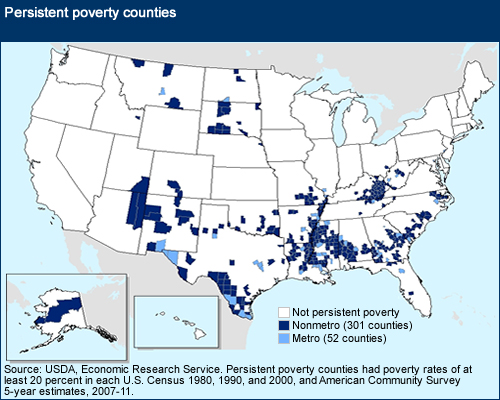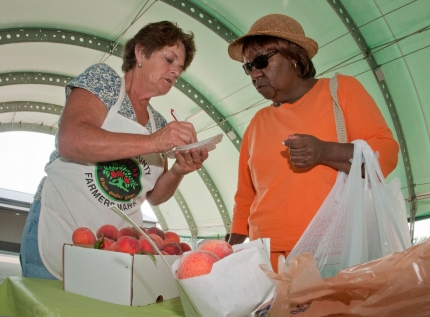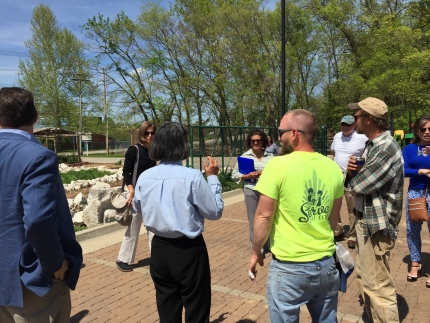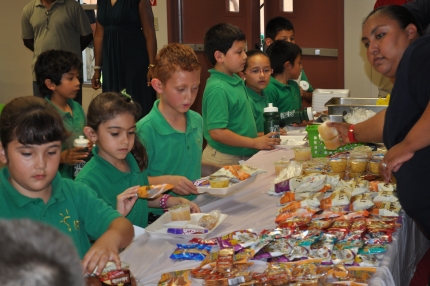Related Rural Blog Posts
Helping Rural Older Americans Thrive
Posted by on July 10, 2015 at 1:00 PM EDTThere are things everyone wants for their families, friends and neighbors: a safe place to live, access to good health care and healthy food. Yet as we get older, sometimes meeting basic needs can become more challenging. Next week the 2015 White House Conference on Aging will focus on the policies that impact older Americans across the country. Often, older Americans who live in rural areas are isolated, with fewer transportation options and limited access to other important services. Knowing these unique challenges is one reason USDA and other federal agencies are investing in housing, health care and nutrition programs for our country’s rural seniors.
Learn more about RuralTapping into the Economic Potential of Local Food Through Local Foods, Local Places
Posted by on July 1, 2015 at 11:09 AM EDTAt USDA, we understand the enormous market potential of local food. Industry estimates suggest that local food sales in America have nearly doubled in recent years, jumping from $5 billion in 2008 to $11.7 billion in 2014. We’ve invested more than $800 million in 29,100 local and regional food businesses and infrastructure projects over the past six years to help farmers, ranchers and rural businesses tap into that market.
Indeed, local food is a national phenomenon that has significant impact on every state’s economy. But local food is not only a business opportunity for agriculture, it can also be a development tool that allows communities to maximize the impact of what is grown and made locally. Local food projects can help grow local food economies and drive downtown and neighborhood revitalization, which is what the Administration’s Local Foods, Local Places initiative is all about. And this year, the initiative is particularly focused on ensuring that kids and families in need have an opportunity to benefit from the development of local food systems. This initiative is part of the White House Rural Council’s “Rural Impact” effort to improve quality of life and upward mobility for kids and families in rural and tribal communities.
Learn more about RuralServing More Summer Meals in Rural and Tribal Areas
Posted by on June 22, 2015 at 2:12 PM EDTDuring the school year, over 21 million children receive free and reduced-price breakfast and lunch each day through the USDA’s National School Lunch Program. But, when school is out, many children who rely on these meals go hungry. The challenge is particularly great in rural areas and Indian Country, where 15 percent of households are food insecure. In these areas, children and teens often live long distances from designated summer meal sites and lack access to public transportation.
According to Feeding America, 43 percent of counties are rural, but they make up nearly two-thirds of counties with high rates of child food insecurity. The consequences are significant. Several studies have found that food insecurity impacts cognitive development among young children and contributes to poorer school performance, greater likelihood of illness, and higher health costs.
The Obama administration has addressed the challenge head-on, investing unprecedented energy and resources to increasing participation in the USDA’s Summer Food Service Program.
Learn more about , RuralEnsuring that All Native Youth Can Reach Their Full Potential
Posted by on June 4, 2015 at 11:00 AM EDTNearly half of Native American people (42 percent) are under the age of 24; more than one-third of Native children live in poverty; and Native youth have the lowest high school graduation rate of students across all schools, according to a recent White House report.
Last week, I visited Riverside Indian School in Anadarko, OK, a school operated by the Department of the Interior's Bureau of Indian Education (BIE), to meet with students and school officials, tour the facilities, and host a roundtable discussion. Most importantly, I wanted to hear from kids and families about what's working and how we as a federal government can better serve tribal communities. As we know, the best ideas rarely come from Washington, D.C., but instead from local communities responding to local challenges. The visit was part of the President's Generation Indigenous ("Gen-I") initiative to remove barriers and ensure that all young Native people can reach their full potential.
Learn more about RuralCreating Opportunity for All in Rural Communities
Posted by on May 20, 2015 at 9:48 AM EDTRural America provides the vast majority of food and energy benefits for the rest of the country, is the source of nearly 90 percent of renewable water resources, and is home to important service sector and manufacturing hubs. Despite this critical role in our nation’s economy, too many Americans in rural areas are not sharing in our nation’s economic growth.
In 2013, 6.2 million Americans in rural areas lived in poverty, including about 1.5 million children. Moreover, in far too many of these communities, high rates of poverty have persisted for generations: Over 300 rural counties have had poverty rates of over 20 percent in every Census since 1980.

While the fight to eliminate poverty is far from over, today, as part of the White House Rural Council’s ongoing efforts to address rural child poverty, we released a report that finds that programs like refundable tax credits, Social Security, SNAP, and housing assistance lifted about 9.0 million rural people out of poverty in 2013, including about 1.6 million children.
Rural Communities Rising to the (i6) Challenge
Posted by on May 11, 2015 at 8:45 AM EDTThe American innovative and entrepreneurial spirit has long provided a foundation for our strong economy. This is no less true in rural regions.
In its new form as part of EDA’s Regional Innovation Strategies (RIS) Program, the 2014 i6 Challenge aimed to make targeted, strategic investments in a broader range of communities.
Of the more than 240 applications that EDA received for RIS Program funds, rural and other non-metropolitan communities represented a substantial subset of both the i6 Challenge and the Cluster Grants for Seed Capital Funds competition.
EDA recently announced the 2014 grantees for these competitions, and a number of rural applicants submitted compelling proposals to catalyze innovation-based economic development in their communities. In light of President Obama’s recent announcement of the i6 Rural Challenge, we want to highlight some of the 2014 RIS Program’s rural grantees.
These grantees stand out not only for having identified underutilized or unconnected resources but also for developing promising programs to help utilize those resources, to connect them to rural innovators and entrepreneurs, and ultimately to stimulate the creation and growth, from the ground up, of sustainable, job-creating companies.
Learn more about Rural


